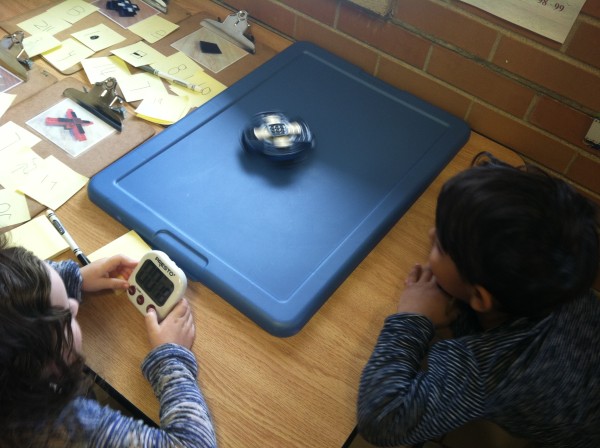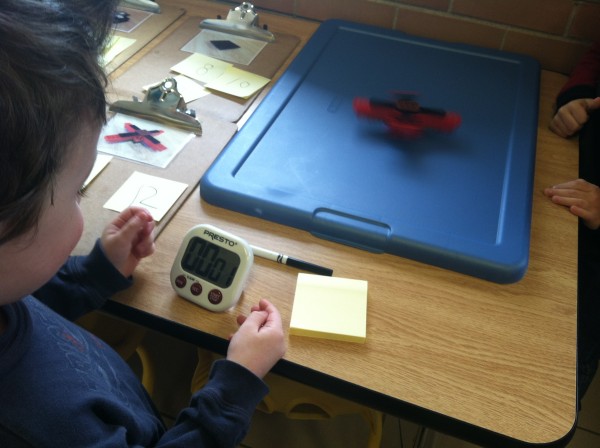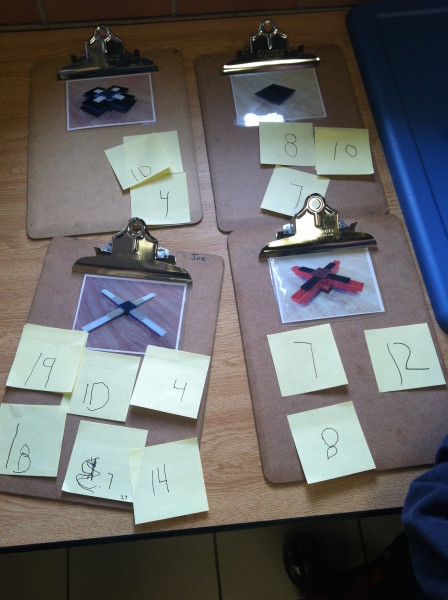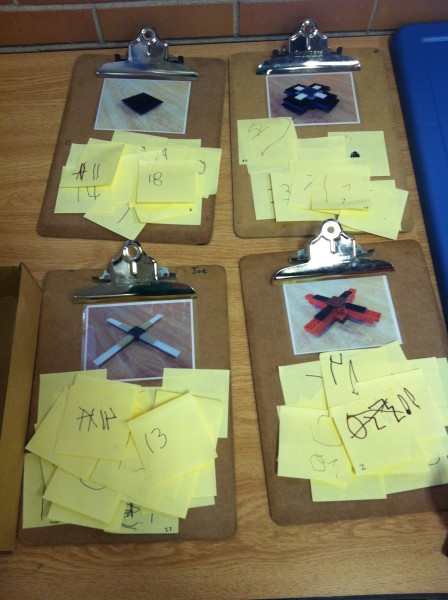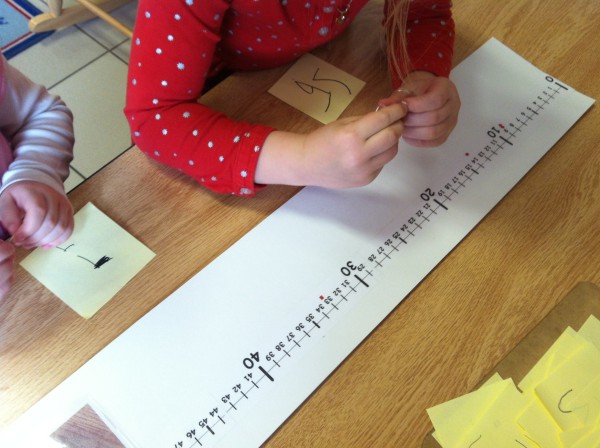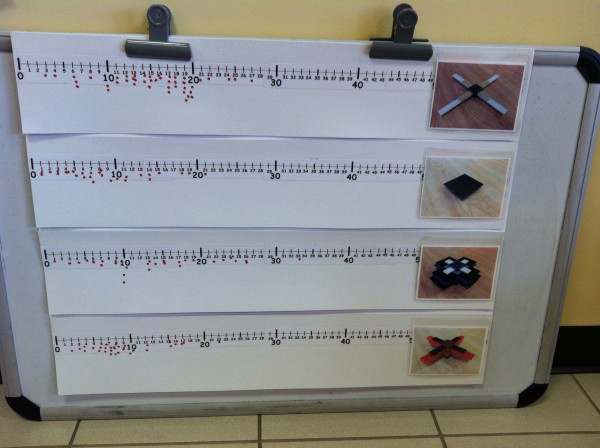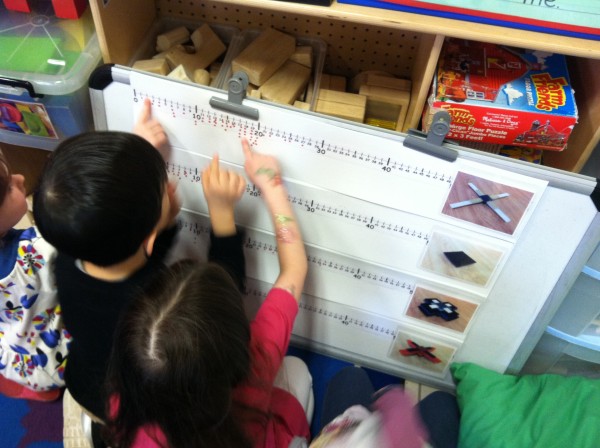Early this year, my students implemented an experiment to test how long various tops would spin. I wanted to devise an activity that would give children a chance to measure time in a meaningful way. Designing such an activity was a bit of a challenge. I needed a reproducible event that would vary in time length, but it couldn’t last too long. Thirty or forty seconds felt like a good maximum; students would likely lose interest in anything that took longer than that. It also needed to be captivating—something that was fun to carry out and that would address a question of interest to students.
Eventually, I settled on an experiment aimed at answering the question, “Which spinning top will spin for the most seconds?” I purchased a variety of plastic tops and tried manipulating them in various ways before deciding to build something from Legos instead. The four tops I built were much easier for children to spin than any of the toy tops I had purchased.
Students worked in pairs, over the course of about a week—one student spinning tops while the other ran the timer. (We had previously run a simpler experiment to get acquainted with the timer.) After each trial, students wrote the number of seconds they measured onto a post-it note and then stuck it onto a clipboard with a picture of the top. Most children drew comparisons without a prompt, but I occasionally ask questions such as, “Which top spun for more seconds?”
I want to pause here to make an important point: post-it notes are fun. It didn’t occur to me until the experimenting began, but kids love sticky things. My students very much enjoyed writing down numbers and sticking them onto the clipboards. I had only hoped to mix things up a bit, but I discovered a great way to record data.
There were a few goals I had in mind with this activity. One was to give children a little better understanding of time. We often talk about time with children, but they rarely have a chance to measure and compare it.
Another goal was to give students a chance to use numbers in a new way. Time is an abstract concept for young children. But watching numbers change on a timer—each successive number appearing after another second passes—gives children a pretty clear idea of how numbers relate to each other. They can experience the difference between four seconds and fifteen seconds, which feels much larger than the difference between four seconds and five seconds.
A third goal was to demonstrate the use repeated trials in scientific experimentation. As is the case with many phenomena, our data varied between runs. Children spun the tops at different speeds and angles. A single trial could paint an inaccurate picture, so we collaboratively tested each spinning top many times—approximating what scientists often do.
Compiling Data
Making sense of our data presented a challenge. We had many numbers to look at, and at first there didn’t seem to be any clear trends. We certainly weren’t going to delve into statistics, but I wanted to create a visual representation of the numbers we had recorded.
I made four large number lines—one for each spinning top—and the children took turns going through each group of post-it notes, adding a small sticker on the number line next to each recorded number. Some numbers were difficult to decipher; beautiful handwriting shouldn’t be a prerequisite for learning to record data. We threw that ambiguous data out—another aspect of research familiar to many scientists, as I pointed out.
When all of the data were in place, we essentially had four histograms. It wasn’t immediately obvious to the children, but after a couple of guiding questions (e.g., “Which tops have more big number and which have more small numbers?”), most could recognize that two of the tops usually took more seconds than the other two.
Expanding my science lessons this year has shed light on the value of integrating early math and early science education. Imagine this activity as a science experiment without numbers, or as a math activity removed from the experimentation; either way it would fall flat. But by combining both aspects, I facilitated an experience that was engaging and highly meaningful. When it comes to math and science, it seems clear that the whole is much greater than the sum of its parts.
